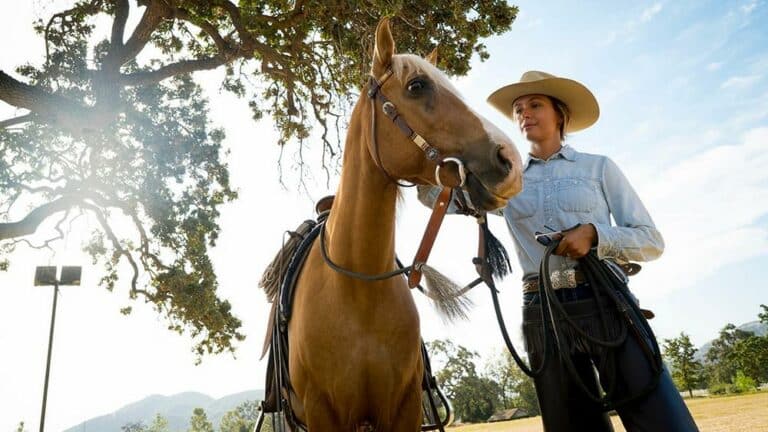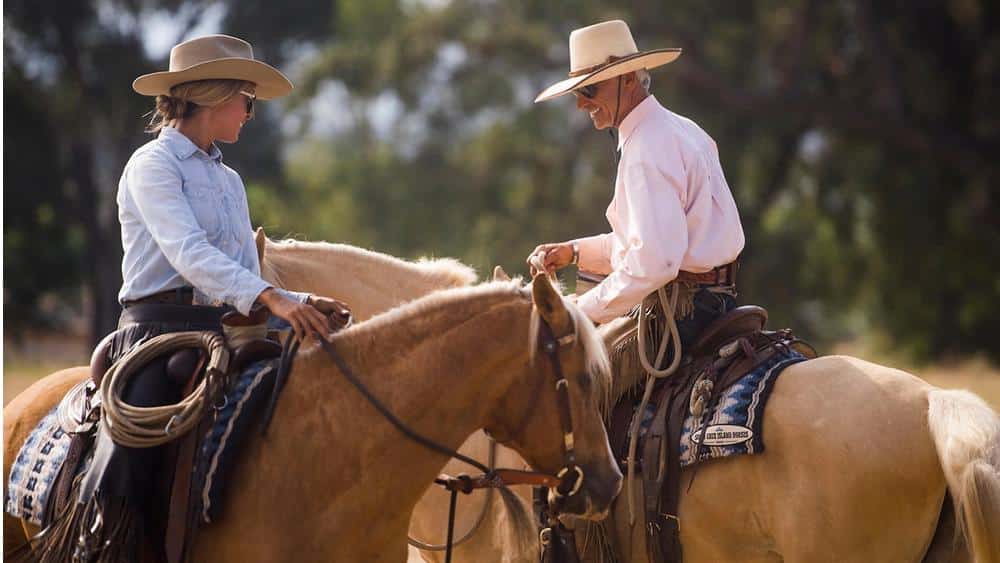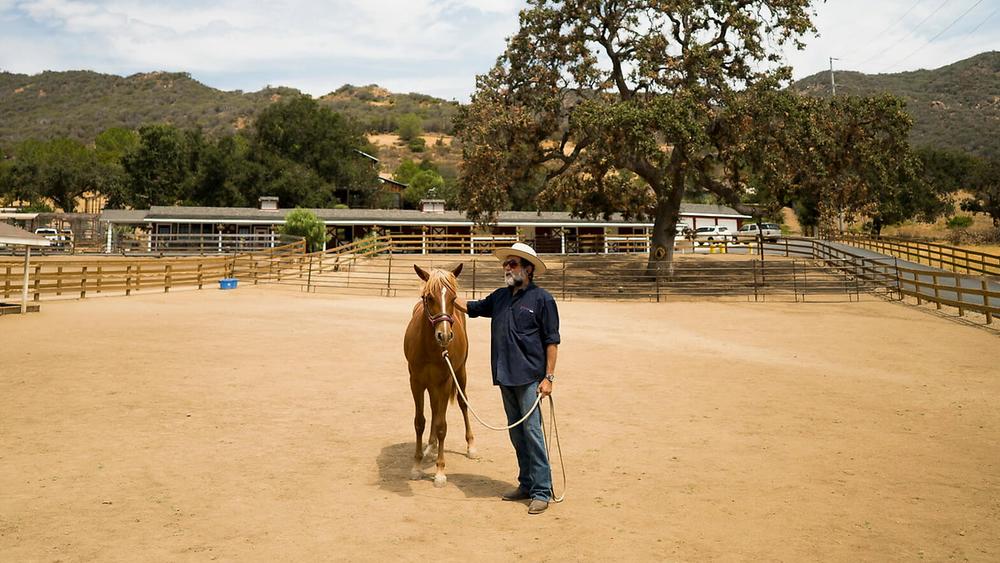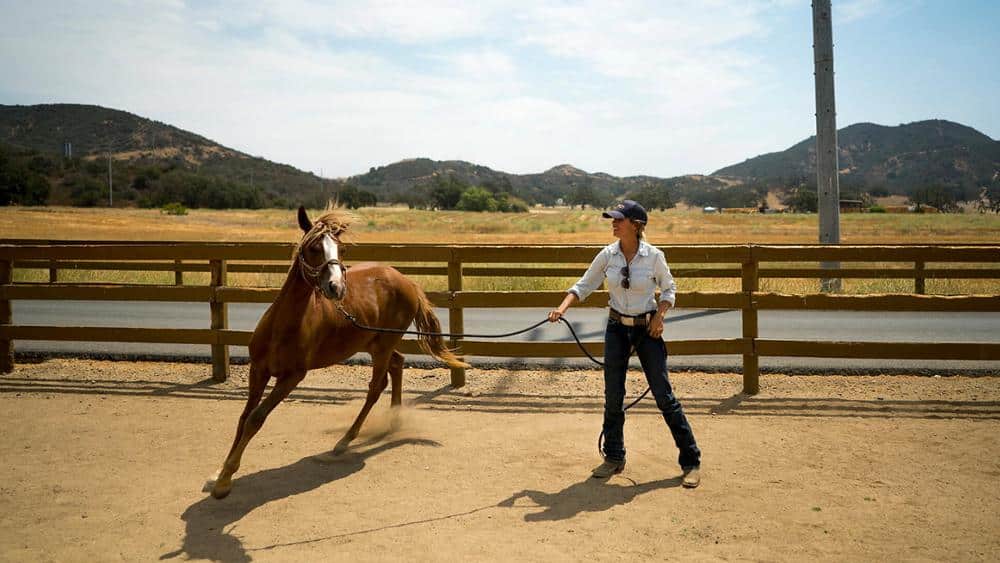
El Campeon Farms in the Santa Monica Mountains is preserving a unique breed with 200-year old Spanish Colonial blood
El Campeon Farms in the Santa Monica Mountains is bringing back one of the most endangered horse breeds in the world — the Santa Cruz Island (SCI) horse. The small herd, now up to 23 horses, may be the last of their kind, but a scientific breeding program to increase their numbers is underway.
As the name suggests, these horses came from the 98-square-mile Santa Cruz Island — one of the Channel Islands off our coast. Records show that horses were first brought there in 1830 — almost 200 years ago.
According to El Campion Farms General Manager Christy Reich, in an interview with the Livestock Conservancy, the first island horses were Spanish Colonial horses descended from those brought to the New World on Spanish galleons to Central and South America. Eventually, the “padres” (Catholic missionary priests) rode these horses up to California.
When Mexico established a penal colony on Santa Cruz Island in 1830, some of the Spanish horses were sent there. With the advent of sheep ranching in 1851, additional horses were brought in to haul hay and supplies from one ranch to another — and the new horses may or may not have been Spanish Colonials.
According to ship records from 1873 to 1905, small numbers of horses were periodically delivered or picked up from the island, but the isolated core herd remained and developed into its own distinct breed. Records in 1874 reported “about 125 saddle and horses and mules,” but nearly half a century later, in 1922, that number was down to “97 head of horses” because of displacement by motor vehicles.
Eventually, ranching became less profitable on the island, and “the horses roamed free and bred among themselves for several decades,” according to one account. In 1984, 40 horses remained, and in 1999, when the National Park Service took over, the 15-19 surviving wild horses were removed (accounts vary).
They were taken to a horse sanctuary in Northern California, but after living with no predators for over 150 years, the animals had no flight response and were preyed on by mountain lions. The survivors were then taken to a sanctuary in Tehama County, where they lived for nearly 15 years. El Campeon Farms bought 13 of the animals in 2014 in an effort to save them through a scientific breeding program.
The Santa Cruz Island horses are registered through the Livestock Conservancy and listed as “critical.”
Santa Barbara-based equine veterinarian Karen Blumenshine had studied the animals in their natural habitat on the island with UC Davis researchers from 1995-1998, analyzed their DNA, and published a scientific paper about them. She describes the horses as genetically unique with “heirloom” genes that should be saved.
She described a number of distinct differences that set the Santa Cruz Island horses apart. Most notably, they have babies at a completely different time of the year than any other horse breed.
“These guys were foaling from November to February,” she said in a phone interview. “They didn’t read the book about waiting for longer hours of sunlight. But the change was adaptive and advantageous for life on that island — because the grass was green while they were nursing; and later when the grains and seeds emerged, they had a higher calorie food available to gain weight back while the foals were weaning.”
Blumenshine found that island horses are hardier than other breeds, moving around the island with no vets or footcare.
“Because they constantly moved around, their hooves got sanded off, and they were textbook perfect,” she said.
The SCI breed is also shorter and thicker than other horses.
“They were heavier than a lot of the Spanish breeds, so maybe some of the draft horses got mixed in…They look like each other, like they’re related, but not like any other breed I know,” Blumenshine said. “They reminded me of the old Californico horses that were around when I was a kid; with bigger heads and feet, which make them hardier. A bigger foot distributes the force of each step over more square inches. They also have coarser manes, which maybe also came from draft horses.
“When U.S. horse breeders started breeding for a certain look — smaller feet and heads — then you lose the heirloom genetics — the genes that are adapted to the environment.”
One other thing that differentiates the breed is its appetite.
“The Island horses also don’t need as much food as other horses — if you feed them too much, they become obese,” Blumenshine said. “We rescued them at the end of a seven-year drought, and they were competing for food with thousands of sheep, and they were still healthy. They lived on native bunch grasses and non-native grasses imported for grazing.
“My hope in the perpetuation of the breed is perhaps to preserve some of the old genetics to pass on if we’ve bred them out of other breeds,” she said. “There’s value in preserving these old genes.”
Reich pointed out that horse breeds don’t survive unless people value them for being good at something, and it was her job to figure out what that was. She discovered their strengths to be in dressage and working equitation, as well as having unusually calm demeanors.
This also makes them valuable as therapy horses.
“They’re very calm and relaxed — nothing bothers them. They love to live outside,” she said.
The Farm suspected there may have been too much inbreeding in the small population, so they’re working with UC Davis to very carefully and slowly introduce more genetic diversity into the line.
“It was important to find similar horses, with calm dispositions and similar body types,” Reich said. “We’ve been able to find some matches in the Lusitano and Andalusian breeds; and are currently in the waiting period to see how these offspring grow up. We take our stewardship of these island horses very, very seriously.”



